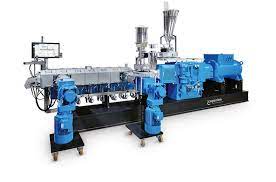 The drive to improve environmental sustainability in American hospitals went prime time last month in a program at the White House that was streamed at WhiteHouse.gov.
The drive to improve environmental sustainability in American hospitals went prime time last month in a program at the White House that was streamed at WhiteHouse.gov.
The White House Council on Environmental Quality invited the Healthier Hospitals Initiative (HHI) and senior Administration officials to participate in panel discussions about efforts to reduce costs and hospitals’ environmental footprint while improving patient care.
The panel was a Who’s Who of people leading the charge, such as Gary Cohen, president, Health Care Without Harm, and founder, the Healthier Hospitals Initiative and Kathy Gerwig, vice president, Workplace Safety and environmental stewardship officer at Kaiser Permanente (Oakland, CA).
Senior Administration officials from the U.S. Department of Health and Human Services, the White House Council on Environmental Quality, and the Department of Energy’s Better Buildings Challenge attended the program and asked questions on topics such as how to encourage supplier involvement. I listened to the two panel discussions on the Internet, and had a few thoughts.
Focus of the efforts seems to be on big dollar savings in energy and construction costs. Jeffrey Thompson, CEO of the Gunderson Health System (LaCrosse, WI), described how energy requirements for heating and cooling of a new hospital under construction will be less than half of the current industry standard. As part of a program called “Envision”. Gunderson also built a two-turbine wind farm near Lewiston, MN that is generating 4.95 megawatts of energy-enough to power about 1400 homes. Gundersen, in turn, is paid for the energy created.
There was a lot of discussion about healthy eating. Brad Perkins, executive vice president for strategy and innovation and chief transformation officer, Vanguard Health Systems, urged hospitals to ban donut shops and other source of unhealthy foods. Buying from local farms is good. It’s even better to have a community farm with help from volunteers. This is part of an appropriate drive to put more emphasis on prevention for chronic diseases, such as diabetes, that are big money sumps for the American healthcare dollar.
Cohen and Gerwig both discussed a major effort to eliminate use of mercury in thermometers used in hospitals. “(The mercury example) taught us a really important lesson about supply chain management, and that is to focus on the cost of ownership,” Gerwig said at the White House event. The mercury-free unit costs more on a unit basis, but Kaiser Permanente no longer had to pay to clean up mercury spills or other related costs.
Three of the panelists discussed PVC: Cohen, Gerwig (very briefly) and John Messervy, director of capital and facility planning, Partners HealthCare, who discussed the Plastics Today articles about efforts to develop alternatives to PVC for flexible applications.
It seems clear that the effort begun by Cohen to eliminate use of DEHP-plasticized PVC in IV bags was pushed along greatly by the decision announced earlier this year by Kaiser Permanente to join the effort. So far only two hospitals have publicly signed on to the PVC initiative: Kaiser Permanent and Dignity Health. Partners Healthcare in Boston also plans to eliminate use of PVC in IV bags and tubing.
“The obstacle that we face is that there has been a very uneven adoption of these sustainability practices around the country,” Cohen commented.
Cohen made some strong, even incendiary comments (“Imagine cancer centers without carcinogens” for example) but most panelists were careful, understanding that major changes require significant testing, technology development, confirmation of the underlying assumptions, and time.
SOURCE : http://www.plasticstoday.com/blogs/medical-musings-white-house-discussion-pvc-hospitals0816201201







